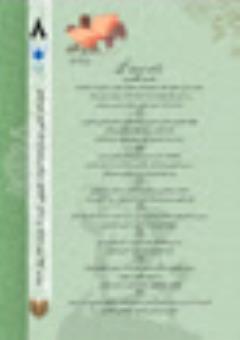بررسی شاخصهای دو گانة پستمدرنیسم در رمان «هست یا نیست» اثر سارا سالار
الموضوعات : جستار نامه: ادبیات تطبیقی (فارسی- انگلیسی)
سهیلا اسدی
1
![]() ,
حسام ضیایی
2
,
حسین منصوریان سرخگریه
3
,
حسام ضیایی
2
,
حسین منصوریان سرخگریه
3
1 - دانشجوی دکتری زبان وادبیات فارسی، واحد قائمشهر، دانشگاه آزاد اسلامی، قائمشهر، ایران
2 - دانشگاه استادیار گروه زبان و ادبیات فارسی، واحد قائمشهر، دانشگاه آزاد اسلامی، قائمشهر، ایران.(نویسندۀ مسئولآزاد واحد قائمشهر
3 - - استادیار زبان و ادبیات فارسی دانشگاه آزاد اسلامی واحد قائم شهر (نویسندة مسئول)
الکلمات المفتاحية: پسامدرن, رمان, روایت, سارا سالار, هست یا نیست.,
ملخص المقالة :
پستمدرنیسم در شمار سومین دوره از ادوار سهگانة تاریخ تفکّر انسانی قرار میگیرد. در این دوره که از پایان قرن نوزدهم تا به امروز را شامل میگردد، خلق واقعیت جانشین کشف واقعیت میشود. بسیاری از داستاننویسان معاصر امروز ایران نیز، تحت تأثیر آثار نویسندگان پسامدرن غرب به نوشتن این سبک از داستان پرداختهاند. از جملة این نویسندگان سارا سالار است که در رمان«هست یا نیست» با مؤلّفههایی چون انکار حقیقت، شکاندیشی و عدم قطعیت، تناقض، اصالتدادن به ذهن خواننده و زمانپریشی، هنر خود را به¬عنوان نویسندهای پست¬مدرن معرفی نموده است. این پژوهش ضمن برشمردن مؤلّفههای پستمدرن در رمان هست یا نیست، درصدد ارائة پاسخی مستدل به این سوال است که سارا سالاردر این رمان بیشتر از کدام عناصر پستمدرن استفاده کردهاست؟ و در میان داستاننویسان پست¬مدرن چه جایگاهی دارد؟ در این پژوهش نویسندگان با استفاده از روش توصیفی -تحلیلی، به¬طور خاص به تعریف ویژگیهای داستانهای پسامدرن و مقولههای آن پرداخته و یافتههای پژوهش نشاندهندة این موضوع است که عامل تغییر زاویة دید و عدم قطعیت مهمترین شاخصههای پسامدرن در این رمان است.
References
Books
1. Beheshti, E, (2007). Story Factors, Tehran: Barg.
2. Biniyaz, F, (2013). An Introduction to fiction writing. Tehran: Afraz.
3. Cahoone, L. (2022). From Modernism to Postmodernism. Translated by AbdolKarim Rashidian, Tehran: Ney.
4. Jencks, C. (2019). The story of post-modernism: five decades of the ironic, iconic and critical in architecture. Translated by Ehsan Hanif, Tehran: Fekre No.
5. Karimi, F. (2019). Subject Analysis in Iran's Postmodern Fiction Literature. Tehran: Rozaneh.
6. Payandeh, H, (2003). Discourse of criticism. Tehran: Roozegar.
7. Salar, S. (2014). Hast ya Nist. Tehran: Cheshmeh.
8. Tadayoni, M. (2009). Postmodernism in Persian Contemporary Fiction. Tehran: Elm.
Articles
1. Abdali, A., safari. J., & Zaheri abdevand, E. (2022). Recitation of ancient poetry in the postmodern novel The Man of Everlasting Concern from Mohammad Ayoubi. Contemporary Persian Literature, 12(1), 3-26.
2. Dehghan Shiry, M. (2017). The Analysis of Postmodernist Elements in the Novel of Strophe-Poem for Young Poets. Research on Fictional Literature, 5(1), 15-40.
3. Golshiri, S. (2011). Post Modernism in Iran’s contemporary fiction (The study of post modernist features in Hooshang Golshiri’s works). The Journal of Epicliterature, 6(10), 242-278.
4. Horri, A. (2008). The cognitive narrative of the story with a look at Hooshang Golshiri's novel "Aeinehaye Dardar". Journal of Persian Language and Literature, 51(208), 1-25.
5. Khorasani, M., & Davoudi Moghadam, F. (2012). Stylistology of Postmodern Sonnet. Tehran: Sixth Literary Research Conference.
6. Koupa, F. (2013). Narrative timing based on Gerard Genette theory in “I might have been lost”. Fiction studies, 1(2), 5-17.
7. Lorestani, Z., & Ghanbari, A. (2021). Postmodernism in Belgias Soleymani` fictions. Research Journal of Literacy Schools, 5(13), 7-29.
8. Saadatynia, Z., Ahmadi, M., & Fooladi, R. (2023). A Comparative Study of Absurdism in Western and Iranian Fiction (Based on the Works of Kafka, Camus, Hedayat and Sadeghi). Literary-philosophical researches, 1(1), 1-24.
9. Watankhah, Z., Seyed Sadeghi, S. M., & Parhizkari, M. (2022). Discourse and postmodern elements in the poems of Seyed Mehdi Mousavi. Jostarnameh Journal of comparative Literature Studies, 6(19), 130-154.
10. Yaghmaei, G., Kamaladdini, S. M. B., & sadeghzadeh, M. (2018). The effect of modernity on modernization of Persian (Iranian) Poetry in 1950s and 1960s. Jostarnameh Journal of comparative Literature Studies, 2(5), 103-134.


